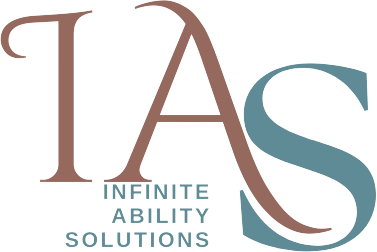As a disability expert and support officer with over nine years of experience, my goal is to create an inclusive work environment that values diversity, supports individuals with disabilities, and fosters collaboration among employees from all backgrounds. In this article, I will provide valuable insights and personal anecdotes to help managers and leaders understand the importance of inclusivity and derive value from implementing these strategies.
1)Embrace Accommodations for Disabilities:
One of the fundamental pillars of inclusion is ensuring that employees with disabilities have equal opportunities to thrive. By providing reasonable accommodations, such as assistive technology, modified workspaces, or sign language interpreters, you empower individuals to fully contribute their skills and talents. Let me share a personal anecdote about how a simple accommodation transformed the productivity of one of our team members.
A few years ago, our company hired a new graphic designer named Sarah. Sarah was an incredibly talented artist with a unique perspective, but she faced challenges due to her visual impairment. While she had a keen sense of touch and could create remarkable designs through tactile methods, working on digital projects proved to be a bit more difficult for her.
Recognizing Sarah’s potential, our team decided to explore ways to provide her with reasonable accommodations that would enable her to fully utilize her skills. After consulting with accessibility experts and Sarah herself, we came up with a solution—providing her with assistive technology specifically designed for visually impaired individuals.
We equipped Sarah’s workstation with a screen-reading software that converted the text displayed on her computer screen into synthesized speech. This allowed her to navigate through design software, read emails, and access online resources independently. Additionally, we provided her with a large, high-resolution monitor and adjustable lighting to optimize her viewing experience.
The transformation in Sarah’s productivity was truly remarkable. With the assistance of the screen-reading software, she was able to efficiently review design briefs, collaborate with colleagues, and complete projects at a faster pace than ever before. The modified workspace further enhanced her ability to visualize her designs and make precise adjustments.
Not only did Sarah’s creative output thrive, but her newfound independence and confidence also had a positive impact on her overall well-being. She no longer felt limited by her disability but rather empowered to embrace her artistic capabilities fully. Her success story inspired other team members to recognize the importance of inclusivity and appreciate the unique perspectives and talents that individuals with disabilities bring to the table.
Sarah’s journey demonstrated that by providing reasonable accommodations, we not only ensured equal opportunities for individuals with disabilities but also unlocked their immense potential. It reminded us of the importance of fostering an inclusive work environment where everyone can thrive and contribute their skills and talents to the fullest extent.
2)Foster a Culture of Diversity and Inclusion:
Creating a culture where every voice is heard and respected is essential for building an inclusive work environment. Encourage open communication, active listening, and collaboration among employees from diverse backgrounds. By embracing different perspectives, we can harness the power of collective brilliance and drive innovation within the organization.
3)Provide Comprehensive Diversity Training:
Offering comprehensive diversity training goes beyond mere compliance. It helps employees understand the significance of diversity and equips them with the tools to embrace it fully. Workshops, seminars, and training sessions can educate staff on unconscious biases, cultural competence, and the benefits of inclusivity.
4)Establish Clear Policies and Procedures:
Develop policies and procedures that promote fairness and equality in all aspects of employment. This includes recruitment, hiring, promotion, and compensation. Transparent guidelines ensure that decisions are based on merit and not influenced by bias. By fostering a fair and inclusive environment, you showcase the organization’s commitment to equal opportunities for all employees.
5)Use Inclusive Language:
Language plays a powerful role in shaping workplace culture. Avoid using language that could be perceived as discriminatory or exclusionary. Gender-specific terms or offensive slang can inadvertently create divisions or make individuals feel marginalized. Encouraging the use of inclusive language demonstrates respect for diverse identities and creates a more welcoming atmosphere for everyone.
6)Embrace Flexible Work Arrangements:
Flexibility in work arrangements is crucial for accommodating different needs and responsibilities. By offering options such as telecommuting or flexible hours, you empower employees to balance their work and personal lives effectively. These arrangements are particularly beneficial for individuals with disabilities who may require additional flexibility.
7)Encourage and Support Employee Resource Groups:
Employee resource groups (ERGs) provide a valuable platform for underrepresented or marginalized communities to connect, support one another, and contribute to the organization’s success. Encourage employees’ involvement in ERGs and provide them with the necessary resources and support. ERGs play a vital role in creating a sense of belonging and driving positive change within the workplace.
8)Celebrate Diversity:
Host events and activities that celebrate the diverse cultures, traditions, and identities represented in your workforce. Cultural heritage months, diversity days, or inclusive social gatherings not only foster a sense of pride but also encourage cross-cultural understanding and appreciation.
9)Conduct Regular Diversity Audits:
Regularly reviewing your diversity efforts is essential to identify areas that need improvement and ensure accountability. Conducting diversity audits allows you to measure progress, identify potential barriers, and take proactive steps to address any gaps. By committing to ongoing evaluation, your organization demonstrates its dedication to continuous improvement and inclusivity.
10)Hold Leadership Accountable:
Leadership plays a pivotal role in creating an inclusive work environment. It is essential to hold executives and leaders accountable for promoting diversity and inclusion at every level of the organization. By setting clear expectations, providing training, and incorporating inclusivity into performance evaluations, you foster a culture where diversity is not just valued but actively championed.
Conclusion:
Implementing these ten strategies will help you create an inclusive work environment that celebrates diversity, supports individuals with disabilities, and fosters collaboration among employees. By embracing inclusivity, your organization will not only attract top talent but also cultivate an innovative and thriving workforce. Let us work together to build a workplace where everyone feels valued, empowered, and motivated to contribute their best.

